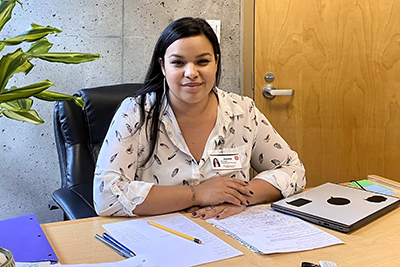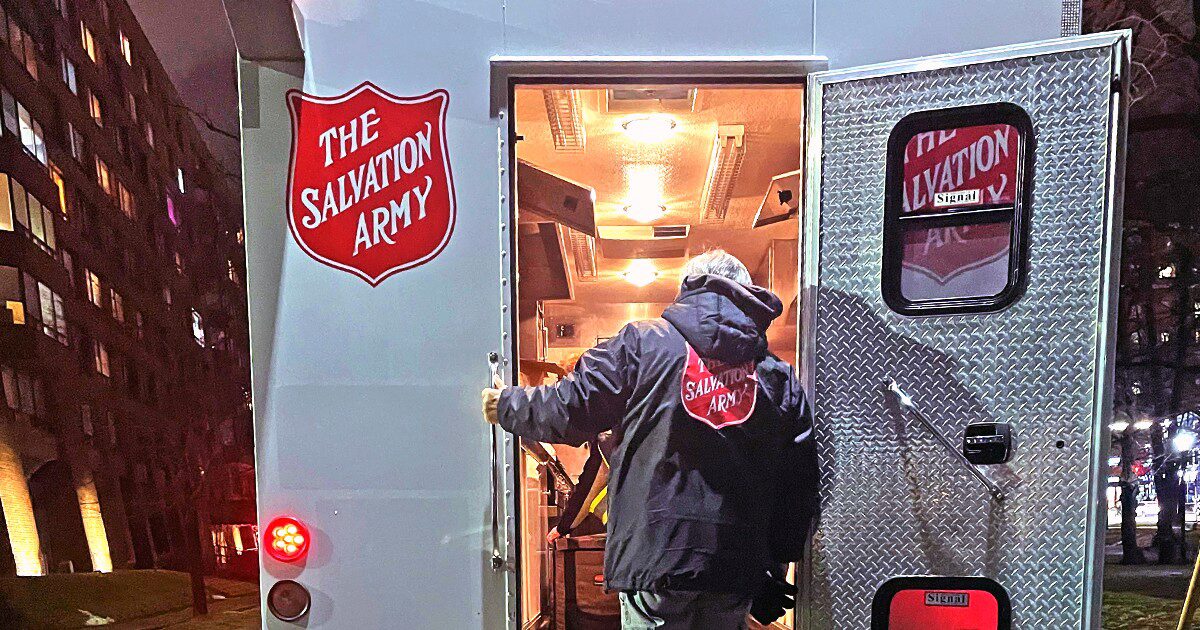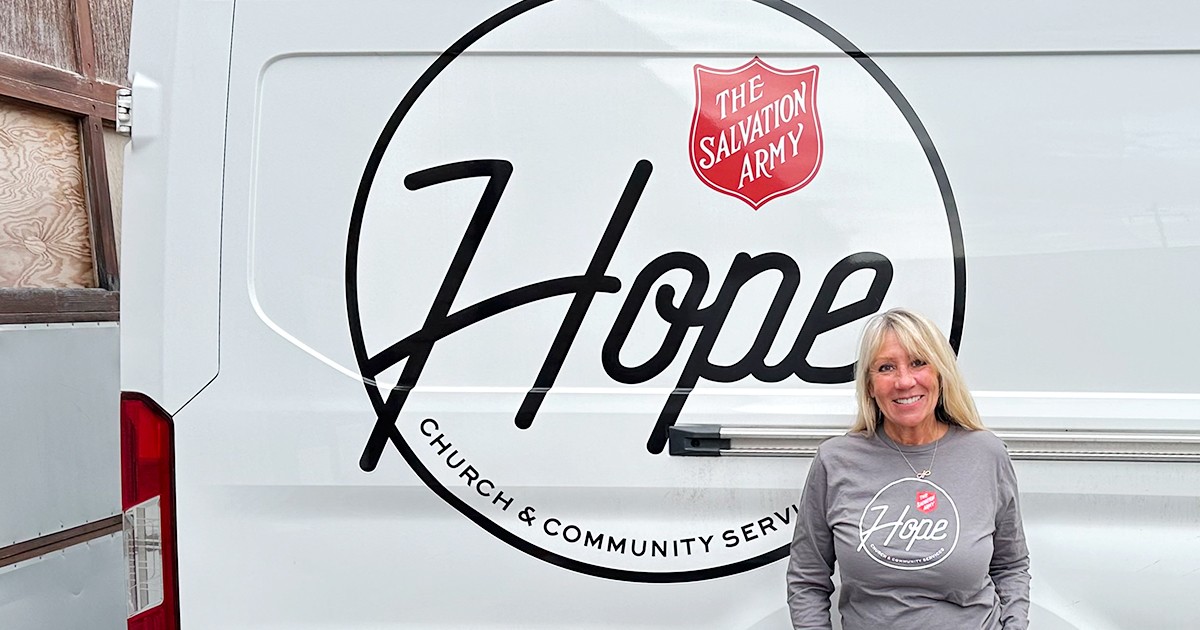(Above) Each year, an estimated 235,000 people in Canada experience homelessness. Belkin House in Vancouver is tackling the most common barriers to getting and keeping housing with an extensive housing pathway program, says Jenea Gomez, here with Ted Ignacio, a member of the support services team
When I was a young girl, I had a teacher who scolded us when we were fooling around or not staying on task by shouting, “When I see you on the side of the road, I’ll flip you a shiny penny.” Her words instilled in me an underlying belief that anyone I saw on the side of the road, people without homes, were probably there because they chose to make foolish decisions and not prioritize their time and attention.
As I grew into adulthood, this conflicted greatly with the life stories of individuals I met who were caught in cycles of homelessness—people who were victims of abuse or sudden disaster, neglected youth, newcomers fleeing danger in their countries of origin, families facing severe poverty. I’ve learned that anyone can become homeless.
According to Statistics Canada, an estimated 235,000 people experience homelessness each year across this country, though many direct service providers agree that the number is probably much higher. Although Canada is fortunate enough to have a comprehensive National Housing Strategy and solid housing development initiatives, for now, the demand far exceeds the supply.

As the manager of transitional housing at The Salvation Army Belkin House in Vancouver, I see this first-hand. On any given day, more than 200 people make their way through our doors in search of a warm meal, a comfortable bed and a kind smile. Unfortunately, for each of them, it’s only temporary.
One resident of our emergency shelter shared this about housing: “It’s a basic need, but it’s not basic to get it. Being homeless means I have to go when I’m told to go and stay when I’m told to stay. I can’t sleep in if I need to or work because I’ll miss curfew. It makes getting out of the cycle too hard.” He’s not entirely wrong. The systems we create can have a perpetuating effect.
The transitional housing program at Belkin House offers a limited number of residents 18 months of accommodation and one-on-one case management. A caseworker told me, “People are so relieved when they’re accepted into the program and sometimes cry when we show them their own little suite with a private bathroom and shower. What they often don’t realize is that even 18 months isn’t enough time to find safe affordable housing in this city. Waitlists are long and challenging to navigate. There’s just not enough space.” Again, he’s not entirely wrong.
Belkin House is tackling this with an extensive housing pathway program designed to address the most common barriers we see to getting and keeping housing. Participants learn about the broad housing market options and the various avenues to access them. The process allows each person to build a unique set of steps based on their individual needs, eligibility markers and desired housing outcomes.
A large portion of this pathway focuses on education related to federal, provincial and local rights and responsibilities, of both tenant and landlord. Participants have stimulating conversation and role-playing activities to build confidence around everything from initiating contact with potential landlords to advocating for tenancy rights and eventually successfully moving out. We partner with local housing providers and our provincial subsidized housing agency to qualify this course as a good two-year housing reference, something that is often required but most of our participants do not have.
The pathway has had a 100-percent success rate of leading to appropriate next stage or even permanent housing, and it doesn’t end there. Each participant has access to six aftercare support sessions to ensure a smooth transition and assist graduates in successfully maintaining their housing. This is just one small program in one city but it’s having a significant effect on individual lives.
The problem of housing insecurity itself is big and it can be easy to get overwhelmed, feel powerless, look away or, worse, assign blame. But if each of us does one small thing—even simply to become more aware of the people experiencing homelessness around us—we can begin to find real solutions.
The Bible exhorts us to remember the poor. The idea of remembering is about knowing and engaging. What would that look like in your context? November 22 is National Housing Day, a day to acknowledge both the progress we are making and the work there is still to be done. It also serves as a reminder to challenge the systems that may not be working, push for more immediate solutions and, most importantly, humanize each person you may see “on the side of the road.”
Jenea Gomez is the manager of transitional housing at Belkin House in Vancouver.










Leave a Comment